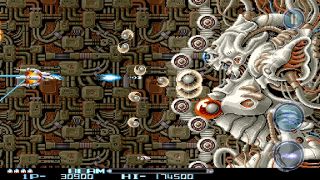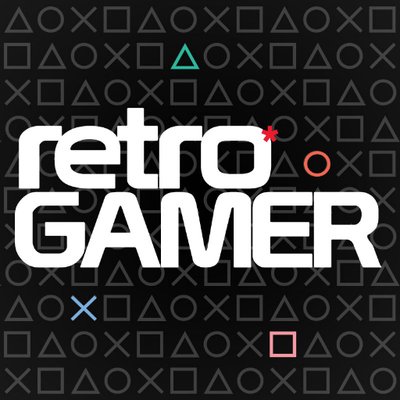Looking back at R-Type 2, the arcade sequel that struggled to escape the shadow of its own legacy - gonzalesandlever
Looking back at R-Type 2, the arcade sequel that struggled to escape the shadow of its own legacy

The sequel to R-Type arrived in December 1989, two-and-a-half years after the unconventional game. This gap between games seems perfectly just these years, but back then there was genuine surprise that Irem waited good-bye to follow up its biggest hit. 30 months was nigh an aeon in arcade terms and much single commenter referred to R-Type Cardinal as 'long-awaited'.
So expectations were authentically high, especially as the passage of time suggested that the continuation would do good from hardware advances that had been successful in the temporary. It was deflating, then, to discover that R-Type II was very much a case of 'R-Typewrite Likewise'.
"On first sight it's kind of unsatisfying," wrote Matt Bielby in his Your Sinclair Slots of Fun column. "The controls, the look and the weapon pick-ups are very to those in the first game. Playing information technology is like voluminous the clock back a few years." These criticisms were shared by different publications. "R-Type II tush be seen as another six levels of the original," wrote Commodore Drug user magazine. "The designers haven't eve bothered to give it the facility of simultaneous two-player action."

No, Irem didn't 'do a Salamander' and add Centennial State-op play. In point of fact, it actually dialed down some elements for the sequel. Most noticeably there were just six stages compared to the master copy's eight. What's many, some of the new stages were to a fault familiar to R-Character fans, peculiarly the opening stage which was a rhenium-run of the original's opener, right down to having the same boss (albeit in a unexampled, increased figure).
Bizarrely the second stage, which took place inside a partially submerged cave and introduced various aquatic enemies, was a real showstopper that should have figured number 1. The R-9 ship also returned and was visually alike, although this was actually a custom version (the R-9C) that benefited from an upgraded plasm cannon.
If you held down the send away button the ray of light would armorial bearing upwardly for the regular plasma beam, the like before, simply if you continuing to hold flame IT would charge a second time to produce a devastating plasma fla that blazed across the screen. This was cool, for sure, merely it took adieu to charge, and the window for using it was so bittie, that IT served little practical use when playing.
The 'Force back' power-up returned and its operation was unchanged, although there were also some new weapons available for it. The superpowe-ups from the original were retained and they were bolstered aside two additions: the shotgun, which discharged a small explosive billing, and the homing laser, which unsuccessful to target nearby enemies.

A second missile option was also introduced which produced a break up bomb outcome. Patc it was skillful to have got new toys to shove off englut leading with, they were largely a missed opportunity and it's safe to pronounce that well-nig players unbroken faith with the effective arsenal from the original. Functioning-saucy thither was little improvement over R-Type, which ran on Irem's M72 hardware. The subsequence was provided in kit form and power-driven by the newer M82 board, simply the guts were the same (mainly the 16-routine NEC V30 processor) so differences were minimal.
Esthetically, the sequel was more muted, with fewer of the primary colors that ready-made the original pop off the screen, only this did wooing the game's grimy 'healthful' visuals. Overall, R-Type II was clearly designed for skilled players who had exhausted the original. Elements were oriented rather than overhauled and, disdain fewer stages, the difficultness level was ramped capable increase the challenge (the last featured a relentless set on on the traditional 'good spot' at the left of the screen).
As an increased, fine-tuned version of the original the game succeeded, and those reviewers that did bemoan the similarities all conceded that R-Type II was a solid, if conservative, sequel (Your Sinclair and Commodore User went on to award it 93% and 86% severally, patc C&A;VG rated it 92% and called it "a colourful blast, all bit as good as the innovational").
Irem played it safe with its key property, only if you wanted a more radical twirl happening R-Character then you had to look no further than the firm's other shooters Firedrake Breed, X-Breed and Cosmic Cop – or so the misconceived second subsequence R-Typecast Leo which followed in 1992.
Changeover capers

R-Type II didn't take in as many home ports as the primary. There were no 8-bit computer ports, although a C64 version was mooted at the time. Activision did publish trustworthy versions for the Amiga and Atari ST, and both were developed by Arch Development which had good form when it came to coin-op conversions. There was also a mightily impressive version for the miserable Game Son by BITS. For the Super Nintendo Irem chose not to port R-Type II directly and instead made Extremely R-Type, an enhanced version that added an extra represent at the beginning set in open distance. Elsewhere most of the boss encounters were either tweaked OR changed completely.
As home versions go, Fantastic R-Type was a generous offering, but it was stymied by the baffling decision to remove mid-poin checkpoints. Forcing players back to the starting signal of the phase when they got score was far more exasperating than the steady slowdown the overrun the game. Following the release of First-rate R-Typecast in 1991, Irem successful the sensible decision to start bundling both games together. First awake was R-Types which was released for the PlayStation in 1998, ahead of new series entry R-Type Delta. The ring featured arcade-accurate versions of both games plus an FMV sequence. The following year both Game Male child versions were prepackaged together as R-Type DX for the Halting Boy Color.
Here you could play the games in either their original monochrome or new colourised forms, likewise as some games back-to- back for 14 stages of continuous Bydo blasting. In 2009 R-Type Dimensions was released, initially for the Xbox 360 and later for the PlayStation 3. Again this faced both games and you could at once flick between the original 2D art and fancy 3D visuals. The fundamental addition, however, was a cooperative mode thus you could finally share shooting duties with a fellow fan. More recently, in 2014, a disappointing mobile version of R-Type II was made available for Apple and Android devices. While R-Type II may not have pushed the envelope, it's still a solid and extremely tough chargeman.
This feature first appeared in Retroactive Gamer magazine outcome 184. For more excellent features, like the 1 you've antitrust say, don't forget to take the print or digital edition atMyFavouriteMagazines.
Source: https://www.gamesradar.com/ultimate-guide-to-rtype-2/
Posted by: gonzalesandlever.blogspot.com



0 Response to "Looking back at R-Type 2, the arcade sequel that struggled to escape the shadow of its own legacy - gonzalesandlever"
Post a Comment